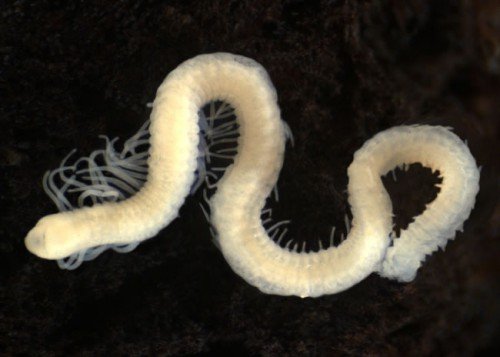
Now, let’s dig deeper into what threatens these fascinating little beings. You’ve got everything from larger predators, like fish and amphibians, to environmental issues such as pollution and habitat destruction. It’s a serious business for such small creatures! Stick with me as we explore the world of freshwater oligochaetes, what preys on them, and what we can do to protect their habitats.
Understanding Oligochaetes: The Underwater Heroes
Oligochaetes are a type of segmented worm, commonly found in freshwater habitats. Think of them as the unsung heroes of the aquatic world. They help decompose organic matter, which means they contribute to nutrient cycling in the ecosystem. When they break down dead plants and animals, they release nutrients back into the water, which promotes the growth of plants and algae—essential for the entire food web.
These worms vary in size and can adapt to various environments, making them resilient. Some live in the soft sediments at the bottom of lakes, while others may be found burrowed in riverbanks. This versatility allows them to inhabit a range of ecosystems, which is pretty impressive!
But here’s the thing: despite their toughness, oligochaetes are vulnerable. Their populations are threatened by both natural predators and human-induced changes to their habitats. Let’s take a closer look at those threats.
Predatory Fish: The Top Hunters
One major threat to oligochaete populations comes from predatory fish. Fish like trout, bass, and catfish often scour the sediment for a snack, and guess who’s on the menu? That’s right—these little worms.
The hunting techniques of predatory fish vary. Some fish, like bass, are ambush predators. They wait for a worm to wiggle into sight before lunging at it. Others, like trout, may actively search through the sediment. Imagine being a tiny worm, just going about your day, and suddenly, a fish appears out of nowhere! It’s a hard life for oligochaetes.
Their best defense? Hiding! These worms can burrow deep into the sediment, making it difficult for hungry fish to reach them. However, this strategy only works if their habitat is undisturbed. When water bodies are overfished or disrupted, oligochaetes lose their safe spaces.
Amphibians: The Silent Nomads
Next up on the predator list are amphibians. Frogs and salamanders might not seem like obvious threats to these tiny worms, but they can be surprisingly effective hunters. Many amphibians have a keen sense of smell, allowing them to detect oligochaetes even when they’re hidden in the mud.
Interestingly, amphibians often hunt at night, which adds an extra layer of challenge for oligochaetes. They’re not just facing fish during daylight; they’re also under siege from above after the sun goes down. While some oligochaetes can quickly retreat into their burrows, constant predation can reduce their populations significantly.
Fortunately, amphibians also play a role in the ecosystem. By feeding on oligochaetes, they help keep worm populations in check, which is important for maintaining a balanced environment. Still, if amphibian populations grow too large or are disturbed, oligochaetes could find themselves in serious trouble.
Environmental Pollution: The Invisible Enemy
Now, let’s talk about something that isn’t quite as visible: pollution. Pollution can have devastating effects on freshwater ecosystems. Everything from agricultural runoff to industrial waste can make its way into our rivers and lakes, introducing harmful chemicals into the water.
Oligochaetes are particularly sensitive to changes in water quality. High levels of toxins can damage their health, making it difficult for them to survive and reproduce. For example, heavy metals can accumulate in their bodies, leading to reduced growth rates or even death.
Moreover, an increase in pollutants can also affect the overall biodiversity of aquatic ecosystems. As oligochaetes struggle to thrive, the species that rely on them for food may also decline. It’s like a domino effect, where one problem causes many others.
Habitat Destruction: The Loss of Safe Spaces
Habitat destruction is another significant threat to oligochaetes. Activities like dredging, dam construction, and urban development can radically alter their environments. When lakes and rivers are disturbed, they lose the soft, nutrient-rich sediments that oligochaetes depend on for survival.
Imagine if your home was suddenly turned into a construction site. It would be tough to find a safe corner to call your own! Similarly, when natural habitats are removed, oligochaetes face challenges like finding food and shelter. In some cases, entire populations can collapse.
Restoration projects that focus on preserving natural wetlands and riverbanks can provide a lifeline for these species. Keeping their habitats intact is crucial for their long-term survival.
Climate Change: The New Frontier of Threats
Lastly, let’s not forget about climate change. As water temperatures rise and weather patterns shift, oligochaetes face new challenges. Warmer waters can lead to decreased oxygen levels, making it hard for these worms to breathe. Moreover, fluctuating water levels can disrupt their breeding cycles, leading to lower population numbers.
Changes in precipitation patterns can also affect freshwater ecosystems. For instance, heavy rainfall can wash pollutants directly into rivers and lakes, while drought can lead to habitat loss. Oligochaetes are often stuck in the middle, vulnerable to the rapidly changing conditions.
To combat these issues, we need to be proactive about protecting freshwater ecosystems. This means advocating for policies that address climate change and promote conservation efforts.
In summary, oligochaetes may be small, but their role in freshwater ecosystems is anything but minor. They’re key players in nutrient cycling and contribute significantly to the health of their environments. However, they face numerous threats from both predators and environmental changes.
To protect these valuable worms, we can take action at both individual and community levels. Supporting local conservation efforts, reducing pollution, and advocating for habitat restoration are all steps we can take to help preserve these freshwater allies.
Ultimately, understanding the challenges that oligochaetes face allows us to appreciate the delicate balance of our aquatic ecosystems. So next time you see a serene lake or a bustling river, remember the tiny creatures living just beneath the surface, working hard to keep our waterways healthy.
